Sue often writes about how a return to a tetrad, perhaps in another area or time of year, reveals new species, and whilst I had looked at TQ63L now twice I had not walked the public access along Butts Lane which I had planned to do on 27th February, when I visited the Little Pell Farm area of this tetrad and time fell short. This is a sandstone area, and as Sue in her recent annual report highlighted, one should expect at least 80 species in such an area, so another visit seemed worth while.
Tuesday 2nd April was mild with sunny intervals and a gentle breeze, and although heavy showers were forecast, I met none on my walk. I had only a rather short morning and the recent clock changes meant I had not yet adapted to the need to get up earlier. I looked carefully on the B-road through Cousley Wood for parking, but it appeared I would have to park in central Wadhurst and retrace my steps.
I resolved nothing was to detract me from getting to a new recording area, so it was an invigorating brisk walk to meet the Sussex Border path, and then head north through scrubby grassland. A strip had been ploughed a year or so ago along side this and docks and grasses had colonised the rough ground left. Where I had to slow down to circumnavigate a fallen Ash Fraxinus excelsior, I took a closer look at the ploughed ground, and took a small piece of soil with immature Tortula truncata.
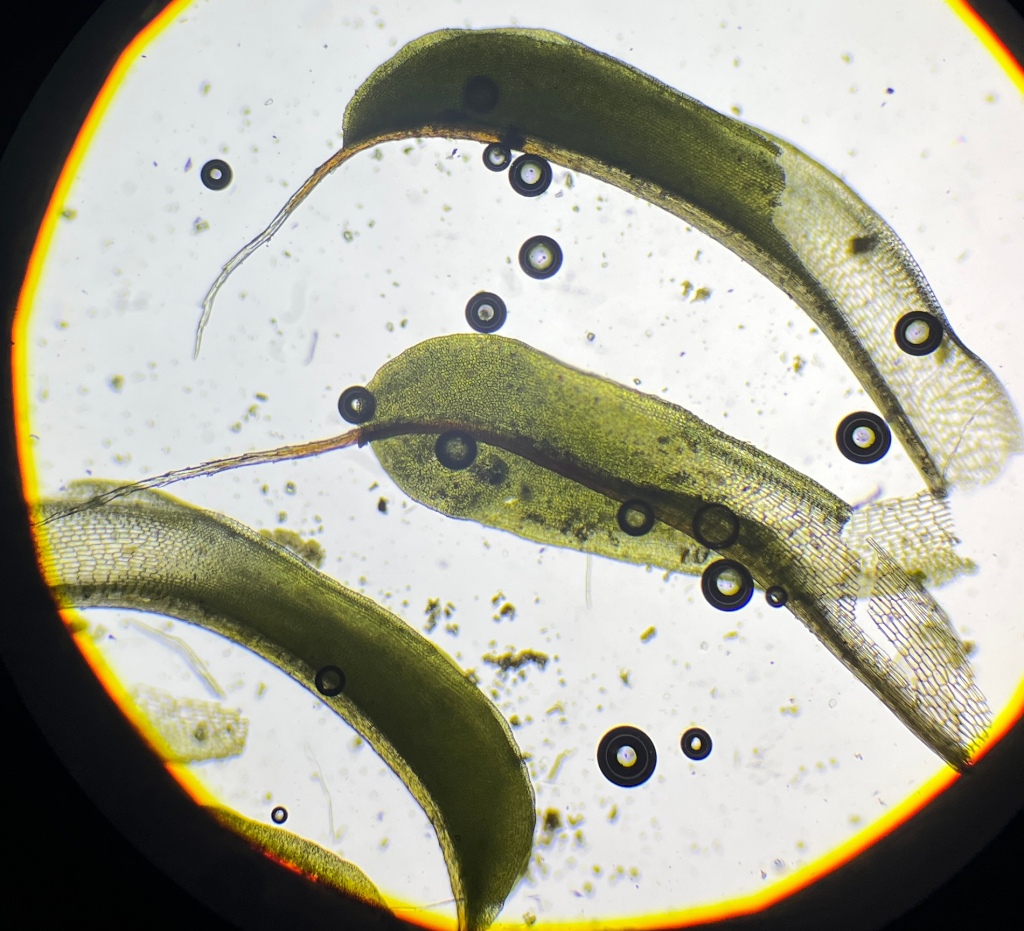
Closer examination at home confirmed this, but intermixed with it were maturing plants of Pseudephemerum nitidum, so the first new species for me for this tetrad. I then quickly, examined the fallen tree and noticed a single clump of large, yellowish looking Tortula/Syntrichia fruiting on the branch lying on the ground. Unfortunately, this was the only bit and the complete 1.5cm tuft came away as I examined it and so I took it home. Much head-scratching, book leafing, and pondering later, I am satisfied it is Syntrichia montana.
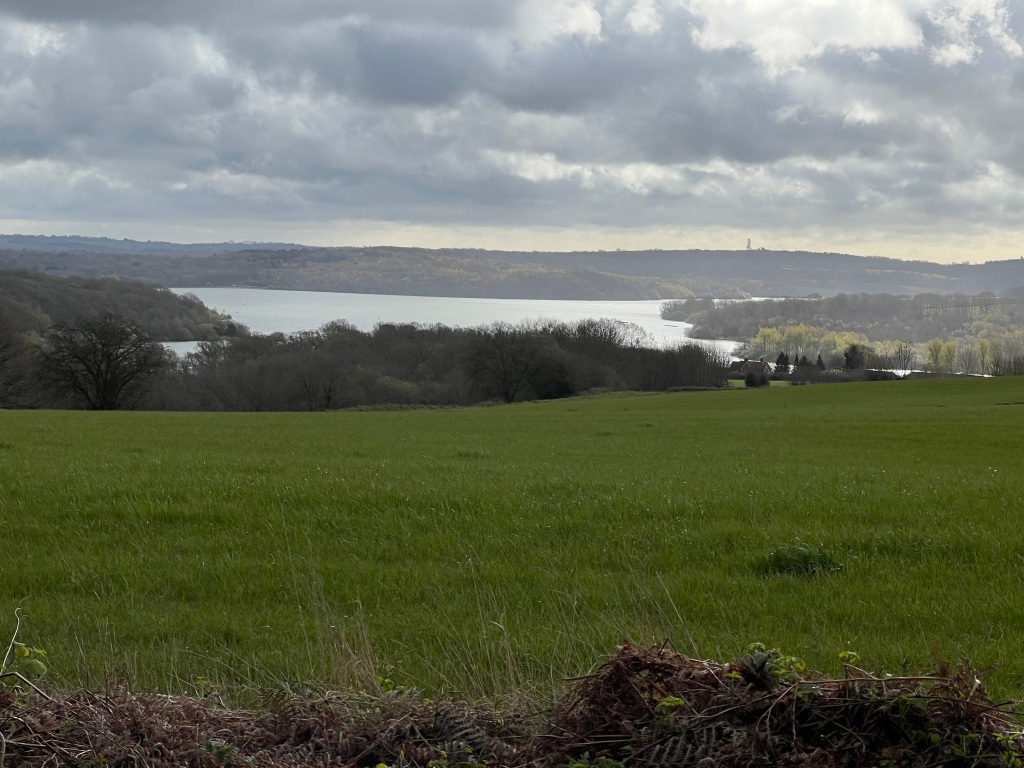
The Border Path otherwise appeared rather dull, opening out onto dull monocultural grassland albeit with a view of Bewl Water nearby. Where it met Butts Lane, the route became more interesting. This early part bordered more ploughed, agribusiness land, but the mixed hedgerow along the northern border of the lane, was on a raised sandstone bank, with Weissia controversa var. controversa fruiting abundantly. Mnium hornum and Atricum undulatum formed patchwork carpets and small tufts of golden looking Plagiothecium gleamed in shadier spots. Although the cells made a nice pattern, the plants jizz was of P. succulentum rather than P. nemorale, and at home, the cell shape and size, and microscopically less ordered cell arrangement was that of P. succulentum.
The tarmac of the lane had frequent patches of mixed acrocarps, and quite quickly I had added Bryum argenteum, B. dichotomum, and Ceratodon purpureus to the list. At the first metal run-off grill across the road, there was Barbula unguiculata and Streblotrichum convoluta var. convoluta. The southern side of the lane now rose as a steep bank, with ploughed land just behind it, but lots of Milk-maids Cardamine pratensis, Primroses Primula vera, Barren Strawberry Potentilla sterilis and other attractive phanerograms and intermixed in this open Spring bank, plenty of Cirriphyllum piliferum and unfolding shoots of robust Plagiochila asplenoides with more expected Brachythecium rutabulum, Pseudoscleropodium purum and Plagiomnium undulatum.
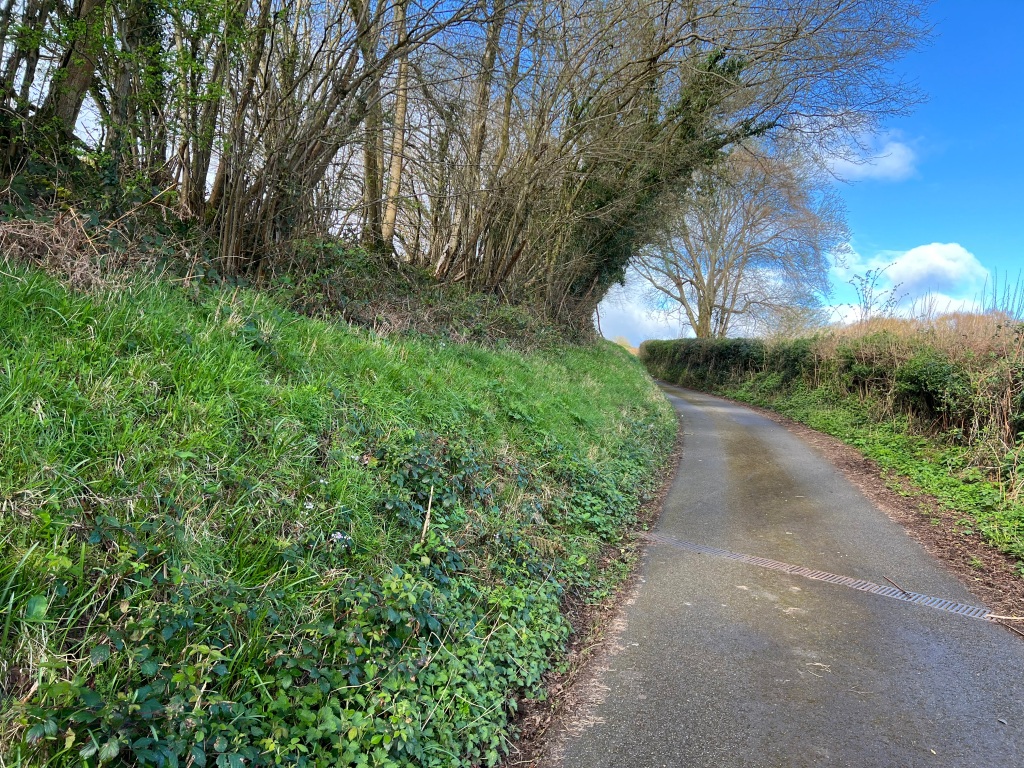
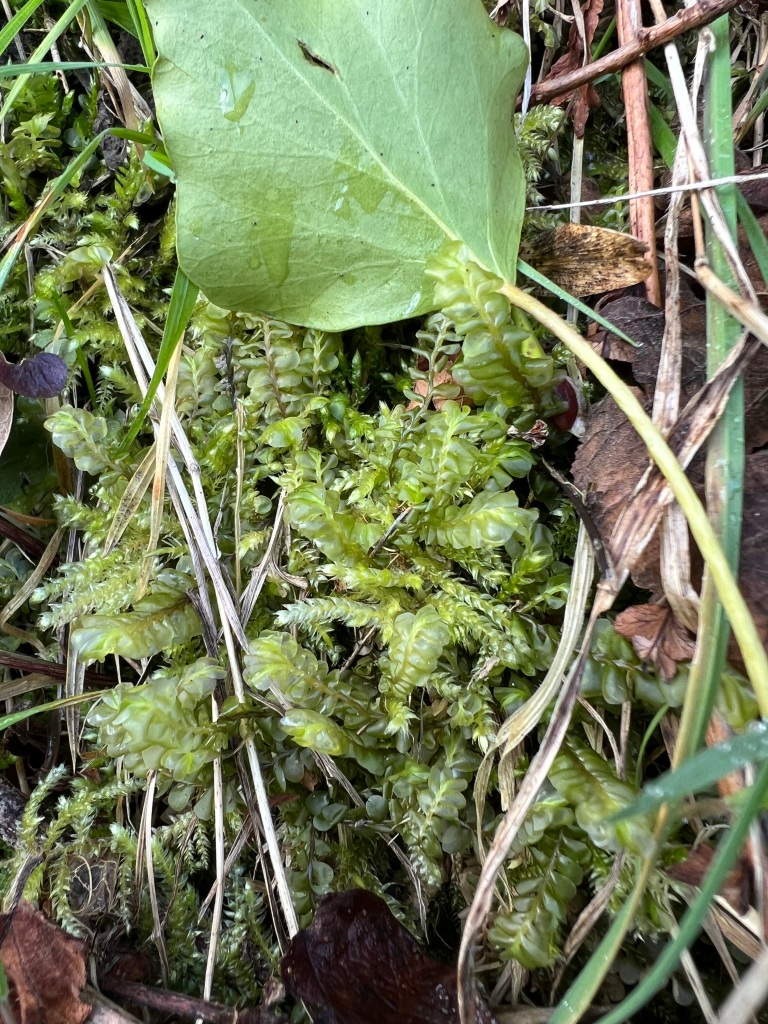
On the south bank, a strip of Sweet Chestnut Castanea sativa coppice provided shade in the summer and sheltering the north side of the road where an Ash tree and adjacent Ash stump supported Radula complanata with Homalia trichomanoides lower down, and Brachytheciastrum velutinum with its papillose seta contrasting nicely the smooth seta of Rhyncostegium confertum also fruiting here. I looked then at the south bank, where crumbly sandy soil supported plenty of Eurynchium striatum and a large carpet of Pogonatum (probably P. aloides but sterile so I cannot be sure), and as I admired this I noticed some greyish carpets which set the pulse racing, and then in places the lovely green spherical capsules of Bartramia pomiformis extending for about six metres. I have only found a tiny population before just outside Bedgebury Forest on a roadside bank and this was a far more satisfactory colony. Brad found a small amount a few years ago near Forest Row which I went to seek out but failed to find. It is declining in the South-east, and I probably have not walked enough in the north and west of Britain to ever find it there.
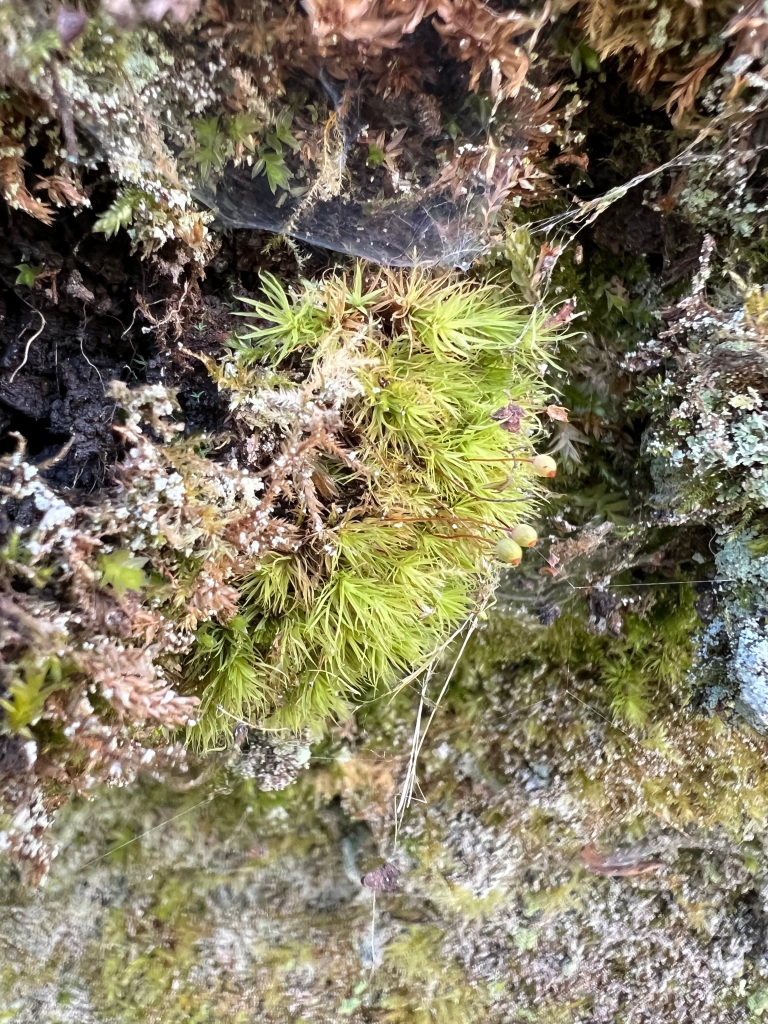
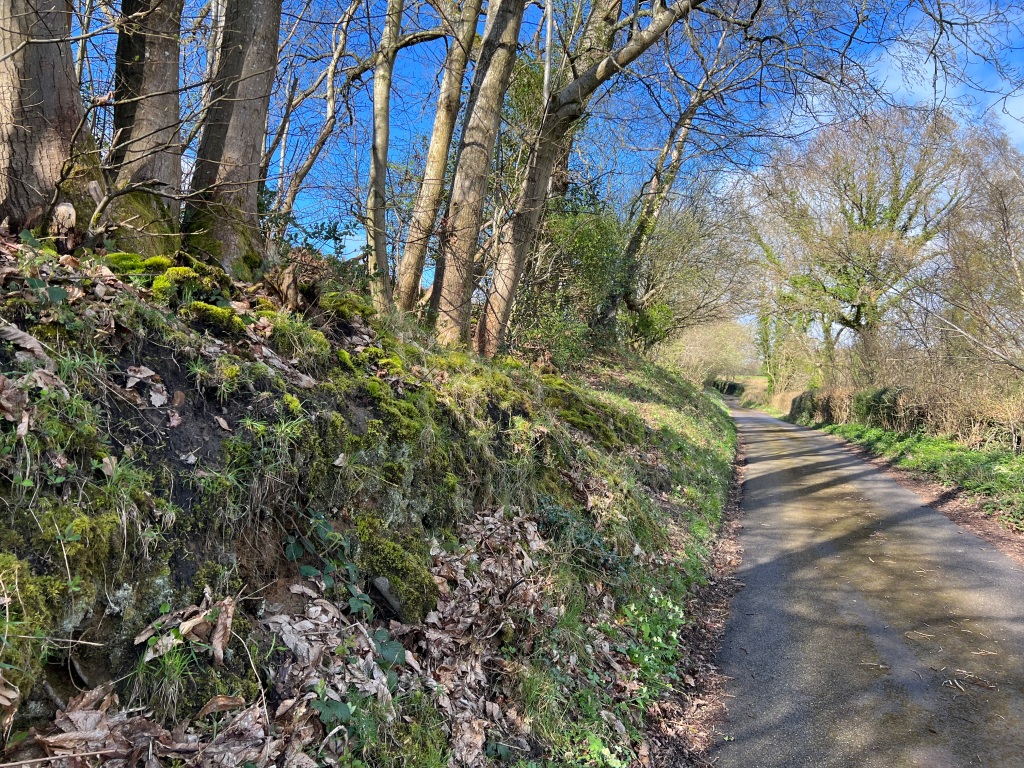
Elated with this find, I continued my circuit. A footpath sign over a ditch drew me to explore into the ditch (to the puzzlement of passing dogs and children) where nice growths of Riccardia chamedryfolia, Oxyrrhynchiun hians, Pellia epiphylla, Brachythecium rivulare and Thuidium tamariscinum added to the day’s list.

The path led past an old barn at Little Butts Farm where the aging concrete had a good carpet of sterile Syntrichia montana, Schistidium crassipillum with just one fruit(a plant I rarely find in the south-east although it was everywhere I looked in Oxfordshire in the early 1980s), Didymodon insulanus and on an Elder Sambucus nigra besides the driveway, Zygodon conoideus and Amblystegium serpens with lots of fruit completing the list for the day. Although I could see the route was mossy around Bewl Water, this has been surveyed and was too much for today, so it was back to some cardiovascular exercise.
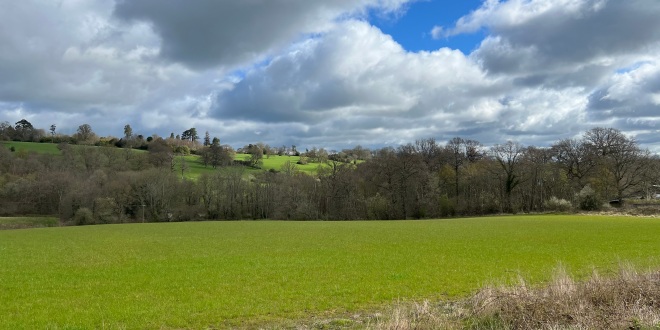
Nice. The Bartramia is always a delight to find.
LikeLike